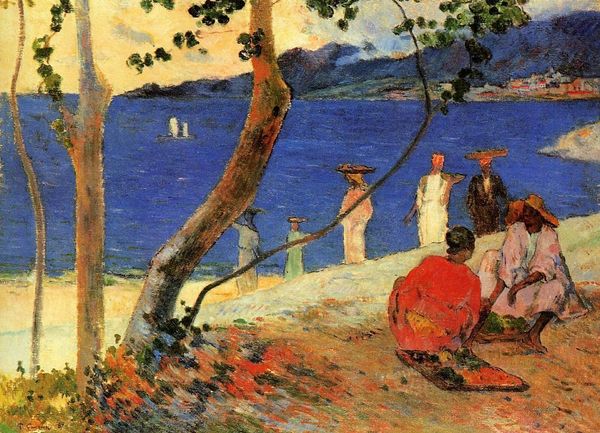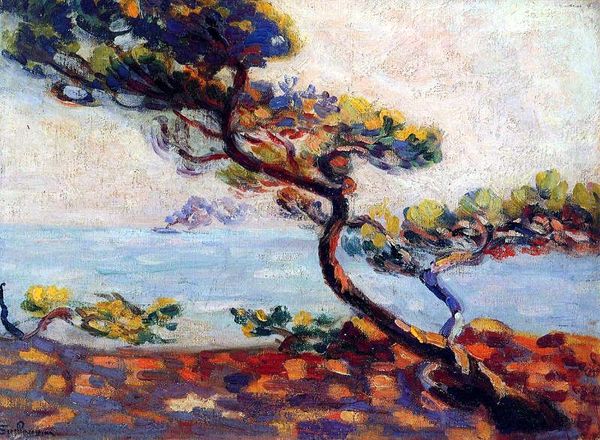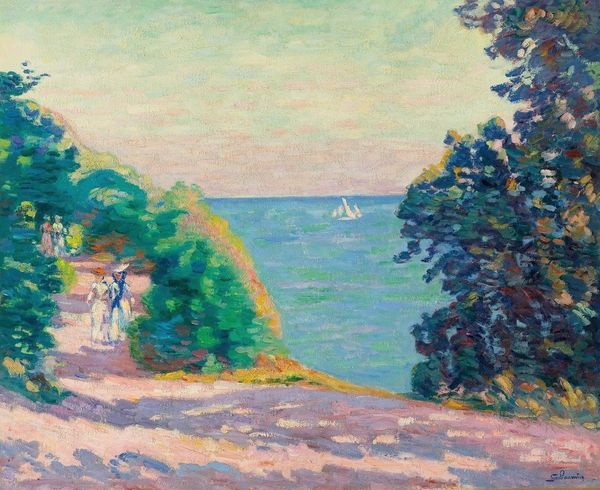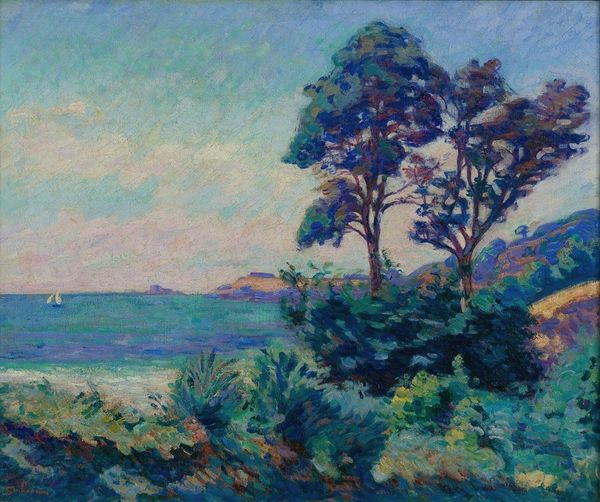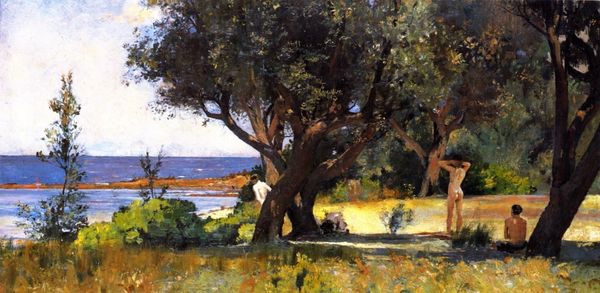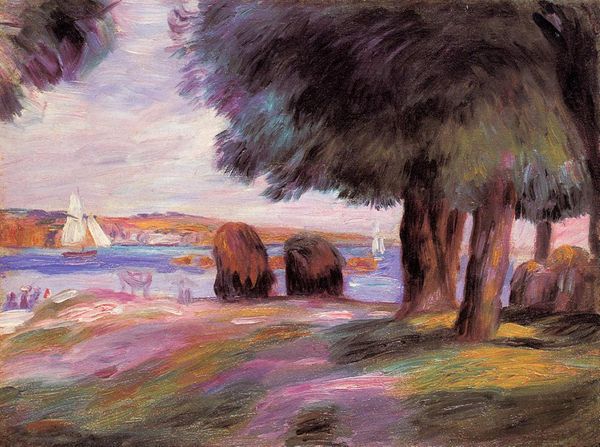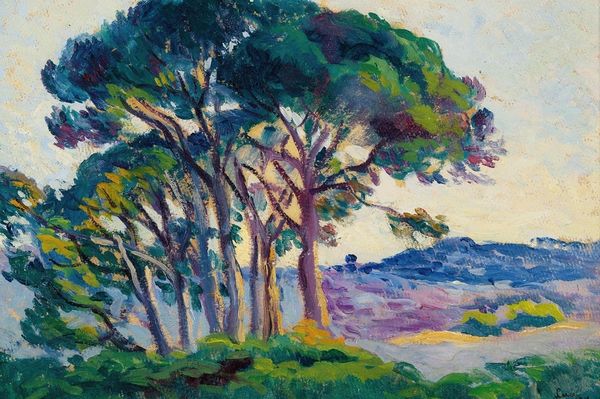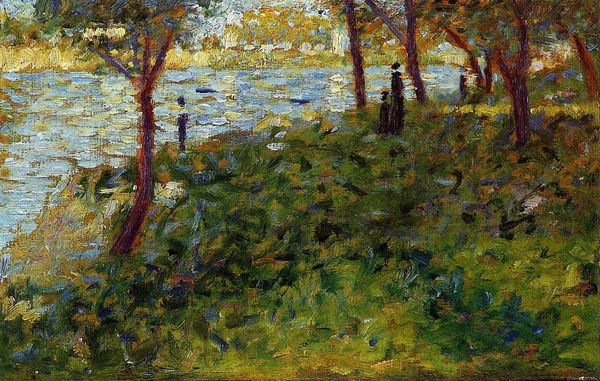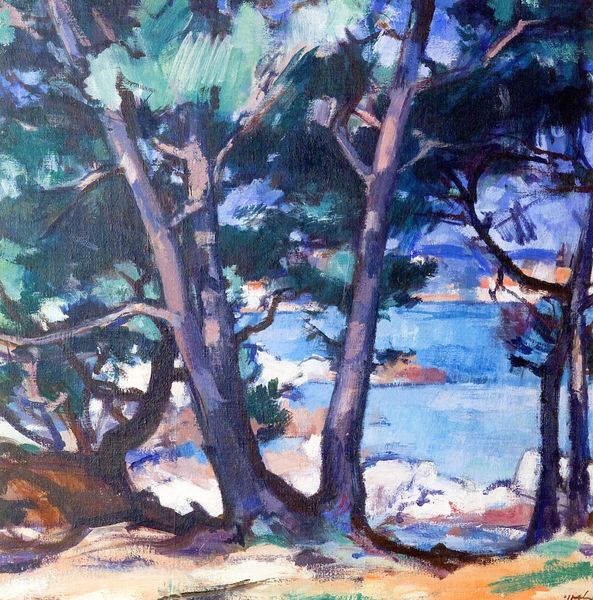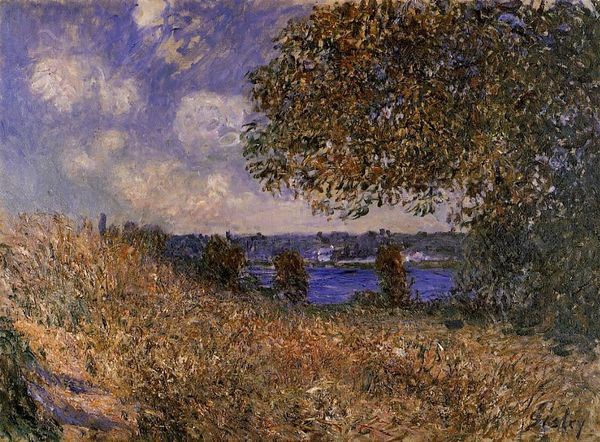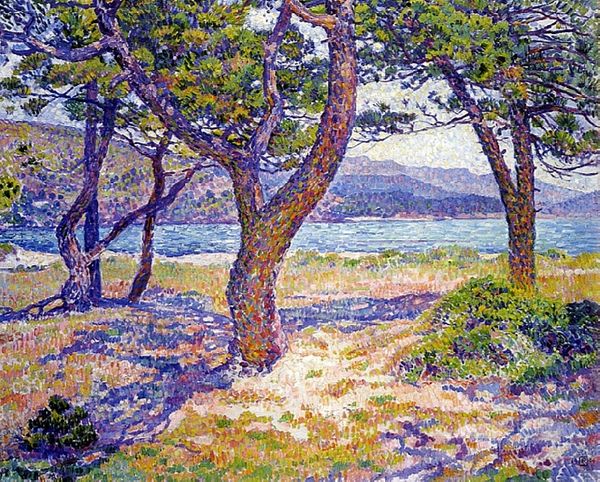
plein-air, oil-paint
#
tree
#
impressionism
#
plein-air
#
oil-paint
#
landscape
#
impressionist landscape
#
nature
#
oil painting
#
plant
#
seascape
#
naive art
#
post-impressionism
#
natural environment
Dimensions: 54 x 90 cm
Copyright: Public domain
Curator: This is "Coastal Landscape from Martinique" by Paul Gauguin, painted in 1887. It's currently housed at the Ny Carlsberg Glyptotek in Copenhagen. Painted en plein air, it utilizes oil paints to depict a scene in the Caribbean. Editor: It's…unexpectedly grounded, isn’t it? The foreground, all earthy tones and bustling figures, keeps pulling my gaze down. There’s a certain vibrant discordance, almost clashing, between the vivid blue of the sea and the russet foreground. What do you make of it? Curator: Well, it reflects a specific moment in Gauguin’s career. This was painted during his brief time in Martinique, a pivotal period as he was moving away from Impressionism towards what would later become Post-Impressionism. You see him experimenting with bolder colours, looser brushwork, and a composition that really flattens the picture plane. Editor: I find it very telling how he doesn’t prioritize a naturalistic depiction of the local community or flora. There’s this strange flattening, as you say, that renders people and landscape almost…stylized. Is he seeking the “primitive” already, projecting a fantasy onto what he encounters? Curator: That's a critical point. Martinique was part of a colonial system. Gauguin's perspective is unavoidably influenced by this. But he was after something beyond just surface representation, aiming to capture a sense of feeling, an emotion from the landscape, something he would refine even further in Tahiti. Editor: Indeed, that quest to transcend mere depiction – a flight from industrial society's woes, if you will – led him far. I find it oddly melancholic to view it through today’s lens. Those palm trees, for all their beauty, can't mask the deeper cultural anxieties stirring beneath the surface of his paintings. Curator: He’s grappling with something real in the world but often processing it through a colonial lens. What seems so clear in his Martinique works is a drive toward flattening out of the composition and bold palette shifts to set up his aesthetic. A style which comes across even in the most pastoral scene. Editor: A gorgeous and uneasy precursor of what’s to come. So rich in context and painterly ambition, I’m still left somewhat…off-kilter, and admiring this small goat. Curator: Indeed! And the bright light filtering through these palms does lend to this unsettling effect as the scene has both this peaceful charm while it keeps these small details which do disrupt it.
Comments
No comments
Be the first to comment and join the conversation on the ultimate creative platform.
